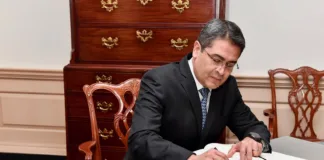By 3Narratives
The Story: A Shift in the Media Landscape
It began not with a bang, but a briefing.
One rainy morning in February, cameras clicked in the newly remodeled James S. Brady Press Briefing Room—only this time, the chairs looked different. Not just in style, but in who occupied them. Gone were the familiar faces from Reuters and HuffPost. In their place sat correspondents from Newsmax, The Blaze, and One America News, notebooks open, eyes locked on the podium. President Donald J. Trump—confident, animated, and unmistakably in command—walked in to a standing ovation from a room that had, just years earlier, been filled with scorn.
He smiled. “It’s good to see some honest people here for a change.”
That moment captured what months of subtle recalibration had already hinted: Trump wasn’t just back—he was winning the CNN lays off 6% of its workforce as CEO Mark Thompson announces $70 million digital transformation
- “Morale at the Washington Post Has ‘Never Been Lower'”The New Yorker
- “Legacy News on Its Heels as Second Trump Era Begins, but Not Abandoning Mission”The Washington Post+2WSLS+2U.S. News+2
- “Trump White House’s New Press Policy: Threats, Revenge and MAGA Media Favoritism”CNN
- “Springsteen, Undeterred by Trump, Keeps Up War of Words From Foreign Stage”WSJ
- “Remarkably Poor Judgment: Wall Street Journal Takes a Critical Eye to Start of Trump’s 2nd Term”WDIV+1WKMG+1
As the media landscape continues to evolve during President Trump’s second term, these narratives highlight the complexities and challenges faced by news organizations striving to balance journalistic integrity with changing public expectations.

Your point of view caught my eye and was very interesting. Thanks. I have a question for you.
What is your question?
Thank you for your shening. I am worried that I lack creative ideas. It is your enticle that makes me full of hope. Thank you. But, I have a question, can you help me?
Thank you for your sharing. I am worried that I lack creative ideas. It is your article that makes me full of hope. Thank you. But, I have a question, can you help me?